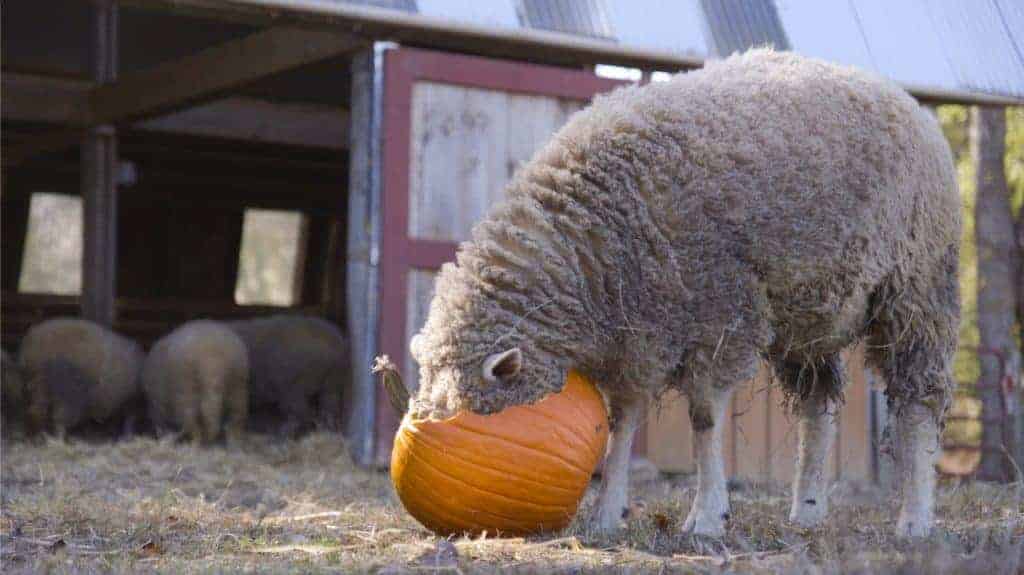
Photo: Kelly Guerin, Piedmont Farm Animal Refuge
Updated April 15, 2021
Enrichment is often thought of as an “extra” or optional provision for residents. Sanctuary staff are understandably focused on providing the food, water, and housing that is necessary for residents to live. However, we are hoping that by incorporating enrichment as an aspect of general care, the lives of residents will be enriched. This is of particular importance for residents residing in smaller, more confined, or barren living spaces. In areas that experience intense cold, the best way to keep sheep residents warm is to leave them in a smaller indoor space when they may normally have a larger outdoor living space for grazing and other sheep behaviors. In cases like these, enrichment can make a world of difference in the lives of residents. No one likes to be bored, including residents, regardless of species!
Developing An Enrichment Plan
It is important to understand the species-specific needs of your residents, in addition to considering their individual needs. An example of a species-specific understanding acknowledges that sheep are grazers, and that needs to be taken into consideration when developing an enrichment plan.
For example: On an individual level, consider Annie. She’s a young sheep recovering from surgery. She will need to live apart from the main herd for at least a week. Setting Annie up in a smaller or augmented living spaceThe indoor or outdoor area where an animal resident lives, eats, and rests. will be necessary, and providing enrichment as a means of mental stimulation can assist in her healing. Examples of possible enrichment strategies for Annie include providing social enrichment either by allowing a calm sheep friend to stay with her during his recovery period, or, if that isn’t possible, allowing Annie visual and physical contact through a fence. Due to her age and smaller size, you could place a large stuffed animal in her living space, or even introduce a mirror. If you do, be sure to supervise to ensure she is not fearful of either. You can also provide simple feeder toys and sheep-safe scents and herbs around her enclosure in a way that either encourages or discourages movement based on veterinary recommendations, and consider adding a familiar smell to her temporary living space. Rotate interesting unfamiliar scents or objects, and play music for part of the day.
When developing an enrichment plan for residents, it’s important to consider the types of behavior in which you are hoping to see an increase or decrease. For example, if you are hoping to reduce confrontational behaviors, there are particular enrichment options that are ideal for that, such as creating a more dynamic space with dividers between feeding areas and throughout the living space. Do you want to increase exploratory behavior? Novel objects and nutritional grazing enrichment may be better suited in this case. Here is an example of an enrichment plan.
Sample Enrichment Plan
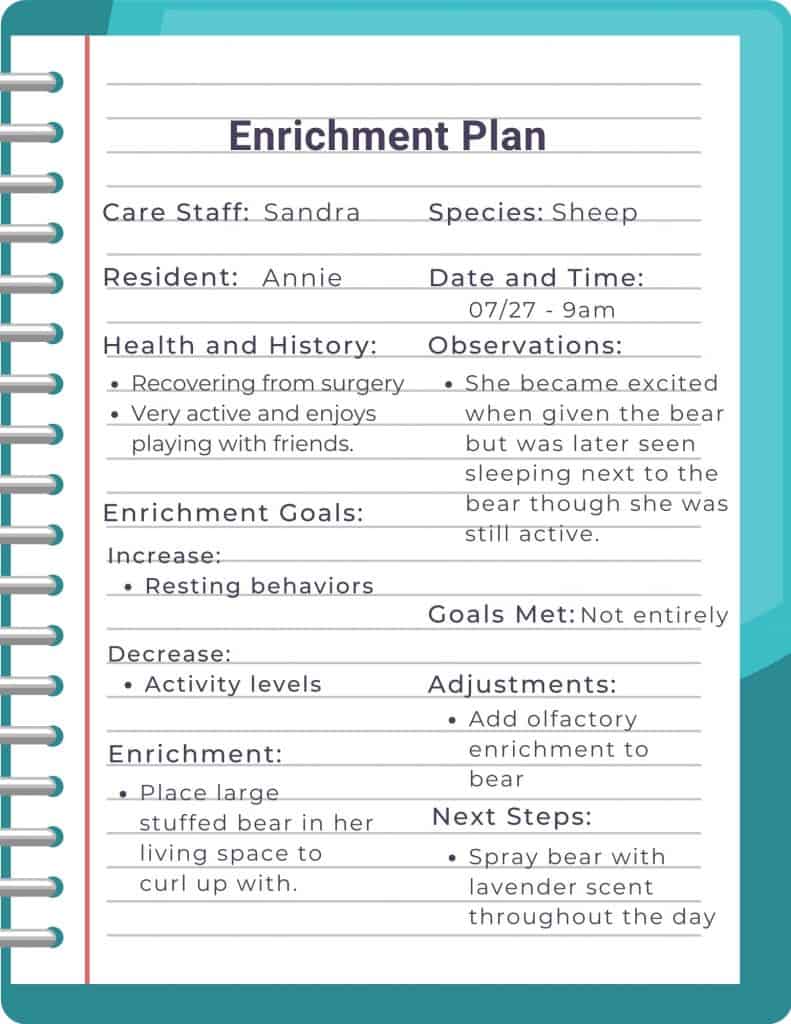
One At A Time!
It is important to only add a single enrichment element at a time when you are first observing and learning whether a resident(s) actually finds it enriching (and for how long they find it enriching before they lose interest). Adding multiple enrichment strategies makes it difficult to get an accurate assessment of the appropriateness of the chosen enrichment. You will be better able to build a schedule when you have more accurate information.
Now that we have covered what an individual enrichment plan looks like, we will cover some of the different types of enrichment for horses and how they could be implemented at your sanctuary.
Observations And Adjustments Are Key!
It’s always important to observe if and how residents use the proffered enrichment. Remember, it is only enrichment if the individual finds it enriching! If they are frightened by something or uninterested in it, then it isn’t enriching.
Social Enrichment
This one may seem obvious but it is important to mention. Sheep are social animals and it is important they have access to other sheep. Of course, there are times when this isn’t possible, due to medical issues (like in Annie’s case), flock disagreements, or sadly, the death of their flock-mates. In cases like these where direct contact with others of their species isn’t possible, there are ways that can enrich their lives during this transitory time.
- If at all possible, sheep should be housed with other sheep as a baseline species need, not as enrichment. If this isn’t possible, then extra steps should be taken to alleviate the stress caused by their isolation.
- Provide visual contact with other sheep.
- You should also provide visual barriers, so sheep can separate themselves from other sheep who are more confrontational.
- Add a mirror to their living space. If you wish to try this out, it’s important that they are observed to ensure they do not find the mirror scary or threatening.
- Add a small amount of soiled bedding (if contagion isn’t an issue) from their original flock’s living space.
- Play a recording of normal or “happy” sheep sounds.
- Place a large stuffed animal in with younger sheep that has the scent of flock-mates.
- Sheep can also enjoy social time with their caregivers and other humans, depending on their personality and comfort level.
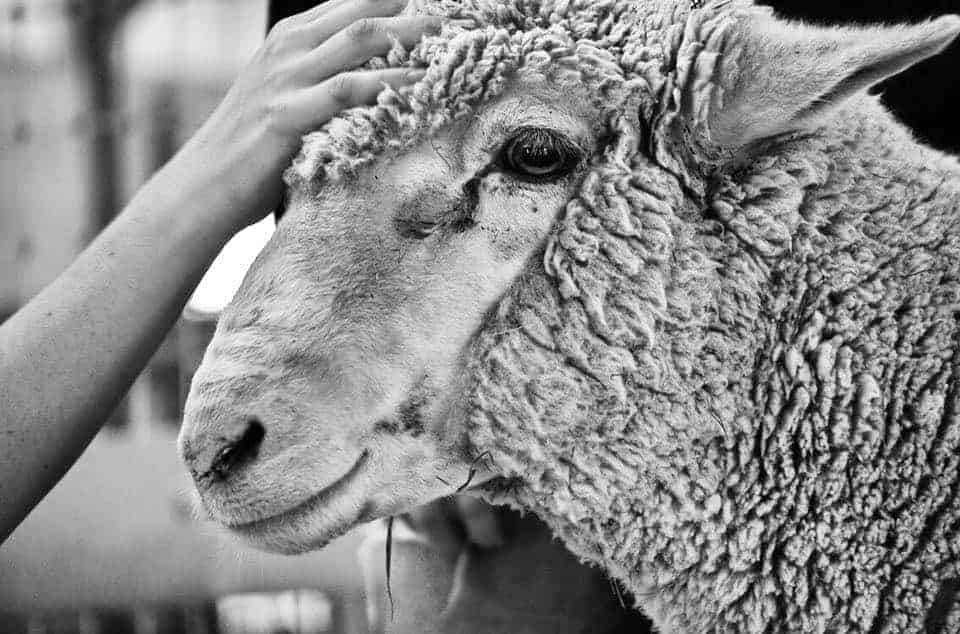
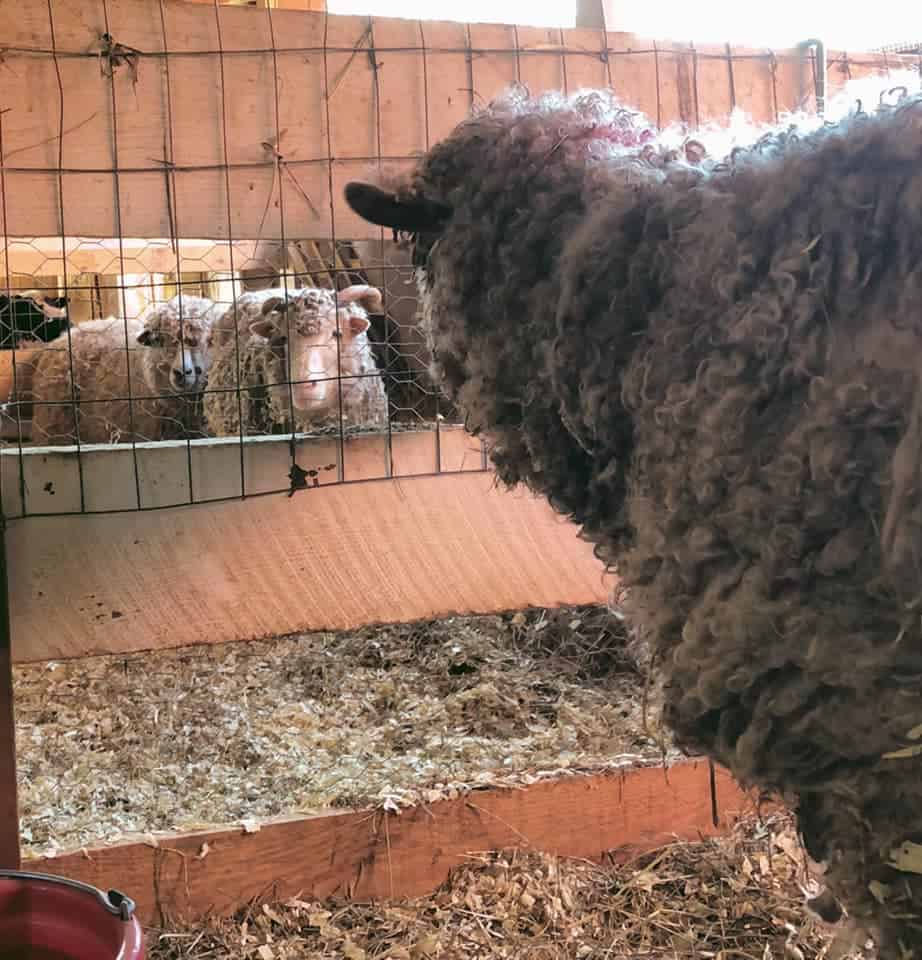
Photo: Lancaster Farm Sanctuary
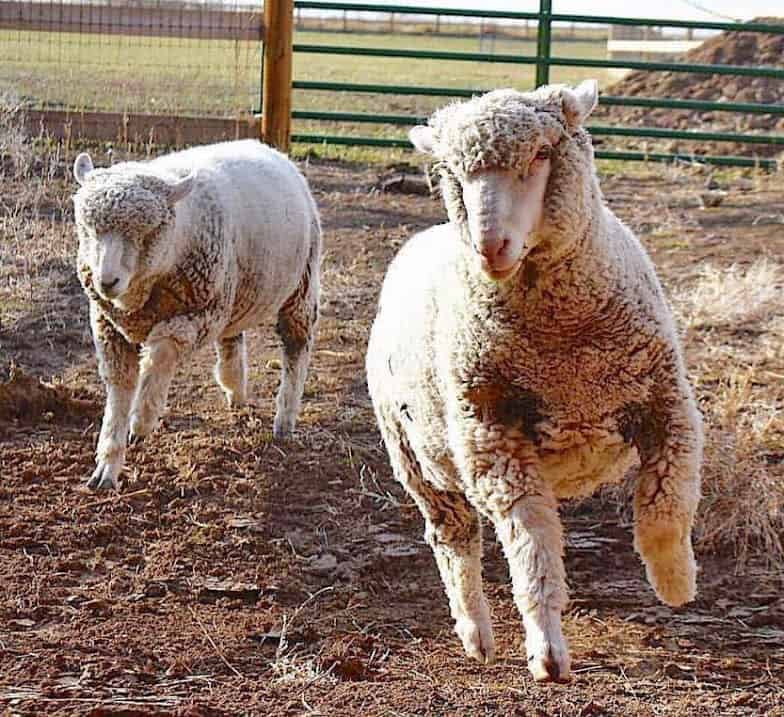
Photo: Luvin Arms Animal Sanctuary
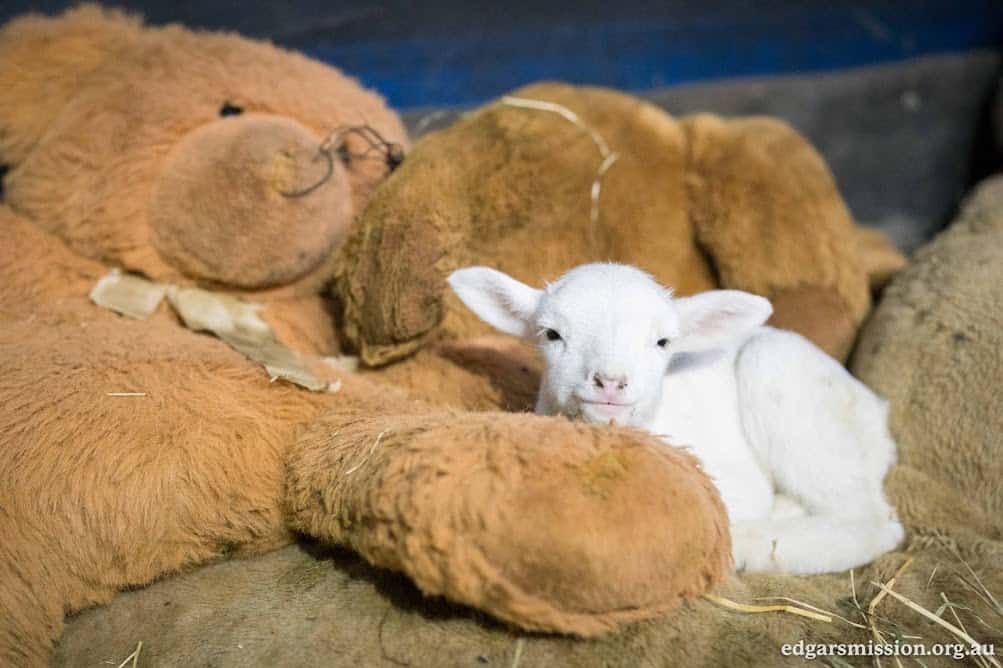
Photo: Edgar’s MissionThe stated goals and activities of an organization. An animal sanctuary’s mission is commonly focused on objectives such as animal rescue and public advocacy. Farm Sanctuary
Physical Enrichment
Physical or structural enrichment refers to creating a dynamic living space for residents. This is where you should think about what your resident as a species and individual would want in a living space. Check out our Animal-Centered Design resource to learn more about this. Let’s look at some sheep-specific physical enrichment:
- Providing multiple water and food “stations”.
- Provide different piles of substrate like fresh dirt, piles of leaves, or sheep-safe mulch.
- Mounds, old trees, sheep-safe bushes etc…
- Set up self grooming stations.
- Partition their outdoor living space and rotate where they have access to.
- Add new features to their environment on a schedule.
Nutritional Enrichment
Sheep can often be observed with their heads low to the ground, nibbling on whatever tasty goodness they find there. Check out our resource on safe treats for sheep residents here!
Here is a list of potential nutritional enrichment strategies for your sheep residents:
- Take a PVC pipe and put caps on the ends. The length of the tube can be a foot long or larger. Drill a handful of holes on the side of the tube, and it becomes a food dispenser.
- Another option is to place sheep food in wiffle balls or other sheep-safe treat balls. As the balls roll, treats fall out.
- In the summer, chop up treats and freeze them into a big container filled with water for a treat that keeps on giving! This has the added bonus of helping residents stay cool.
- Some puzzle feeders made for dogs can be used with supervision.
- Add a pile of leaves (be sure they aren’t toxic) and sprinkle treats throughout.
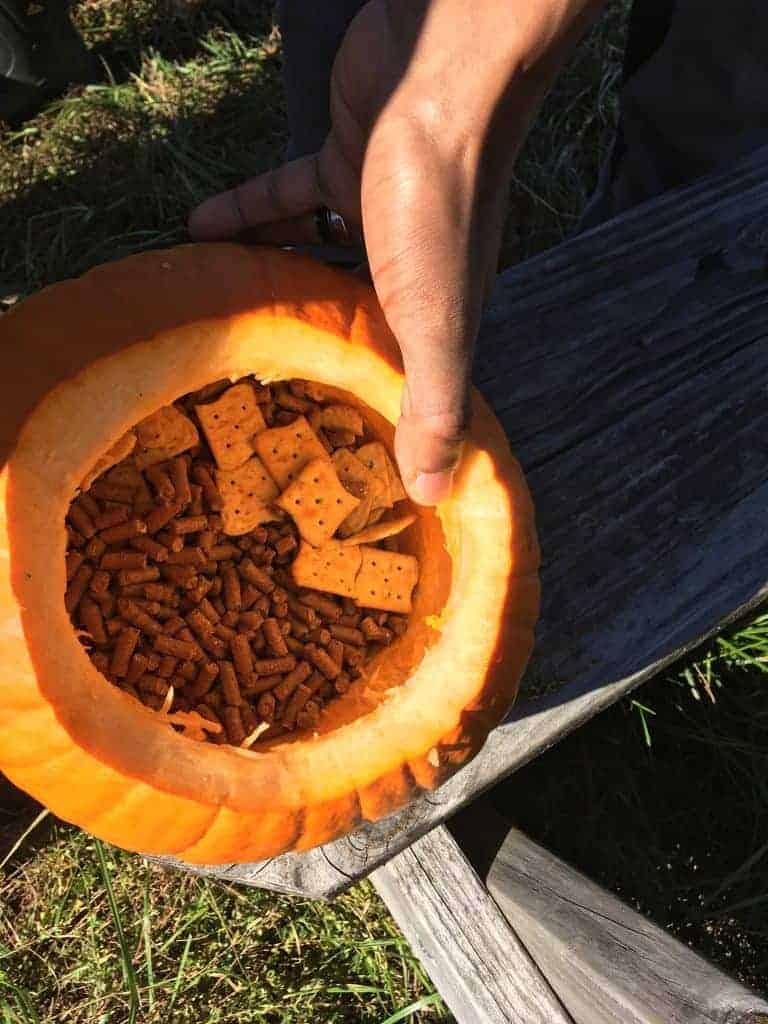
Photo: Piedmont Farm AnimalA domesticated animal that is used by humans either for their body or what comes from their body. Farmed animals have fewer regulations governing their welfare than other species in many countries. Refuge
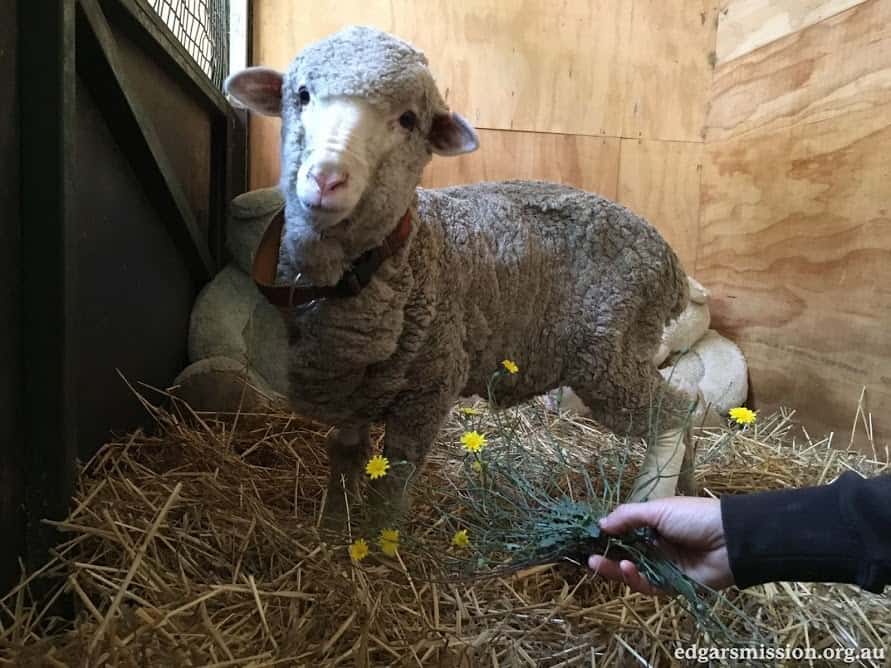
Photo: Edgar’s Mission Farm Sanctuary
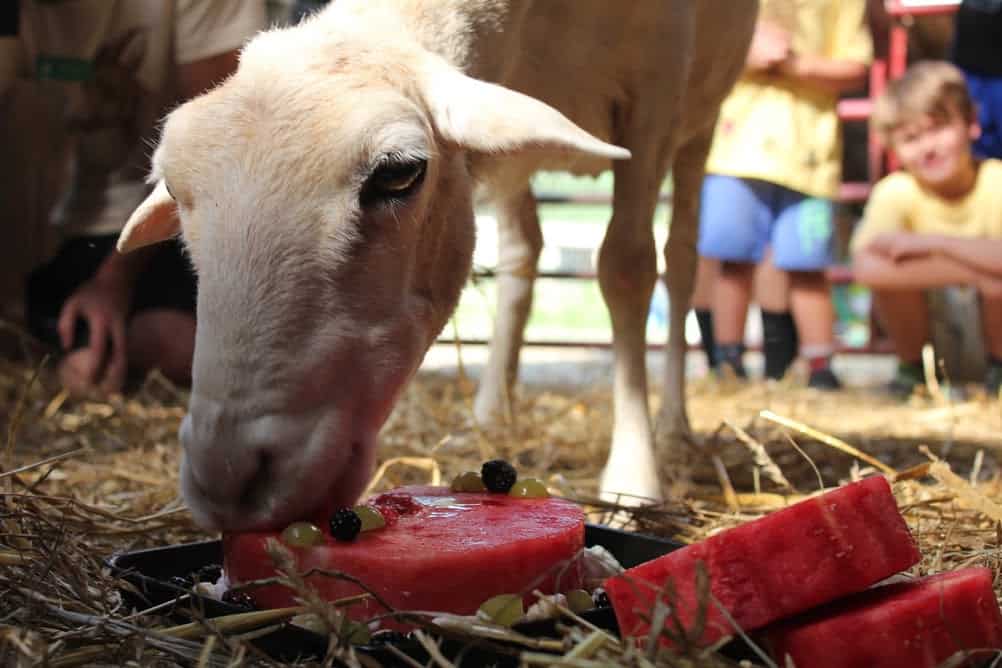
Photo: Piedmont Farm Animal Refuge
Sensory Enrichment
Sensory enrichment refers to enrichment that engages the senses. Arguably all enrichment engages the senses, but sensory enrichment focuses in on sight, touch, hearing, and smell. Each can provide interesting experiences for residents!
Visual Enrichment
Sheep can also benefit from visual forms of enrichment. While there haven’t been a lot of studies done specifically addressing visual enrichment for sheep, we do know that they recognize individual human and sheep faces, and they may, therefore, find some of the following visual enrichment strategies engaging as well:
- Displaying computer screensavers, particularly those that move.
- Showing television programs or movies, especially for isolated sheep residents.
- In other species, images of the same species have been projected onto walls and shown to promote behavioral imitation among the social group. Therefore, projecting scenes of happy sheep may help your resident sheep feel good too. Interest in images can fade after a few weeks, so they should be changed routinely to sustain interest.
- Provide mirrors or reflective polished metal surfaces. If you choose to implement this, observe the residents carefully. This may not be an ideal form of enrichment for them if they exhibit confrontationalBehaviors such as chasing, cornering, biting, kicking, problematic mounting, or otherwise engaging in consistent behavior that may cause mental or physical discomfort or injury to another individual, or using these behaviors to block an individual's access to resources such as food, water, shade, shelter, or other residents. or fearful behaviors.
- Adding new sheep-safe things to the environment can encourage exploration of their living spaces. This may include traffic cones, balls, or even something as simple as a box. As long as sheep do not fear the objects or risk ingesting them, you can add anything that may be visually interesting and appealing and observe their reactions to ensure it’s a positive addition.
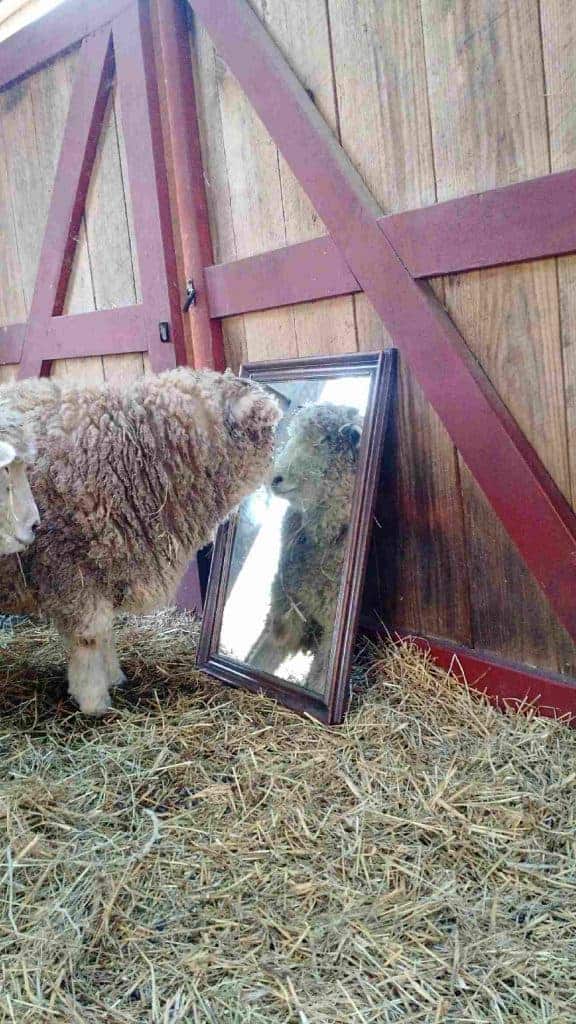
Photo: Piedmont Farm Animal Refuge
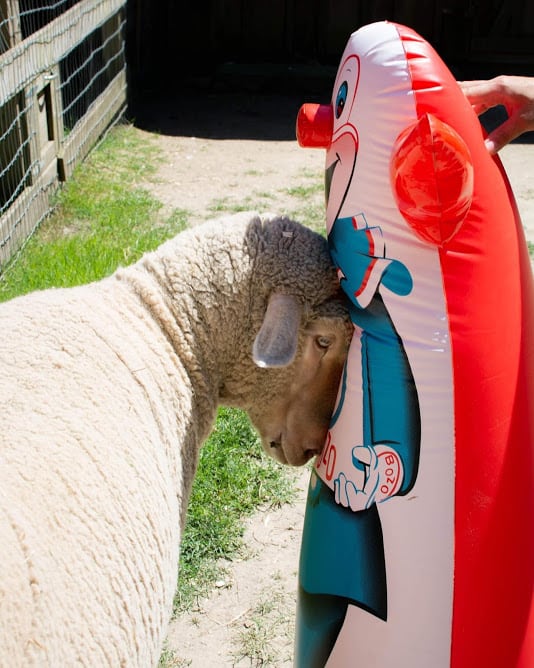
Olfactory Enrichment
Olfactory enrichment is often overlooked when considering sheep. However, sheep often explore their environment through sniffing and tasting things. Examples of olfactory enrichment strategies for sheep may include:
- If you need to transfer a sheep to a new living space, add a bit of soiled bedding from their previous space for a familiar scent that may make the adjustment a bit easier.
- Rub sheep-safe herbs in different areas and place in PVC feeding tubes.
- Use sheep-safe essential oils on different toys and see how they respond.
- If introducing new sheep to an existing flock, provide them each with some soiled bedding from the others’ area to become familiar with their scent.
Auditory Enrichment
Do you love a good tune? Or have a favorite song that soothes you? The same can be true for sheep! Examples of auditory enrichment strategies for sheep may include:
- Try playing different music for sheep for a limited period and observe their behaviors. Are you hoping for increased activity or decreased activity? Calm or playful behaviors? Start with calm, soothing music. Then you can see if they enjoy anything more upbeat!
- If they are cooped up due to weather issues, try playing nature sounds, or the sounds of happy sheep.
- Think about how the objects you add to their living spaces could provide not only tactile, visual, and olfactory stimulation, but auditory as well.
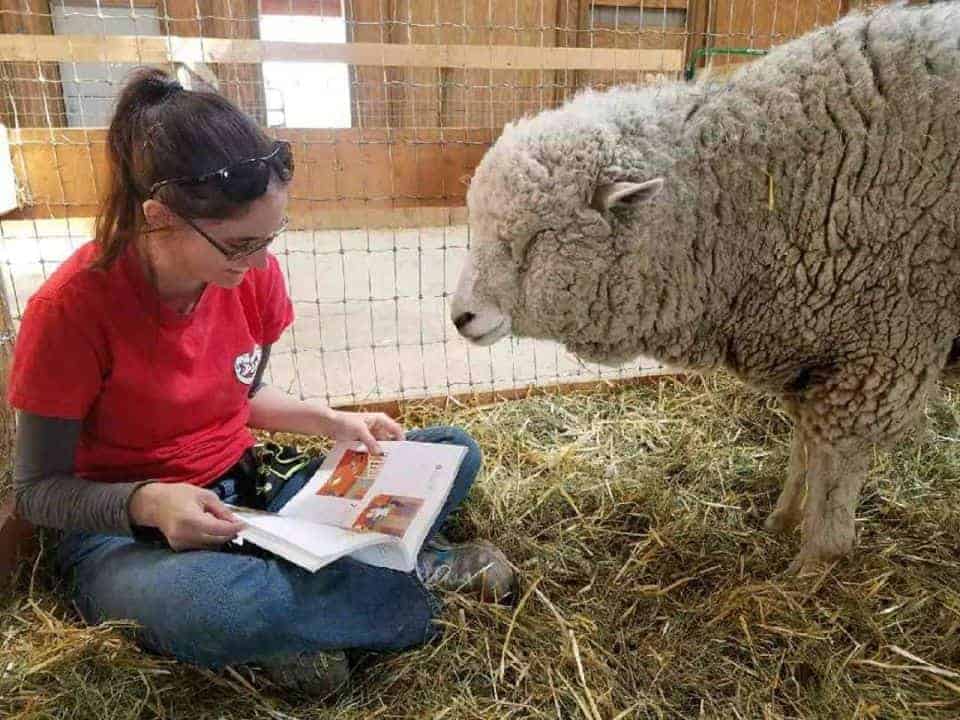
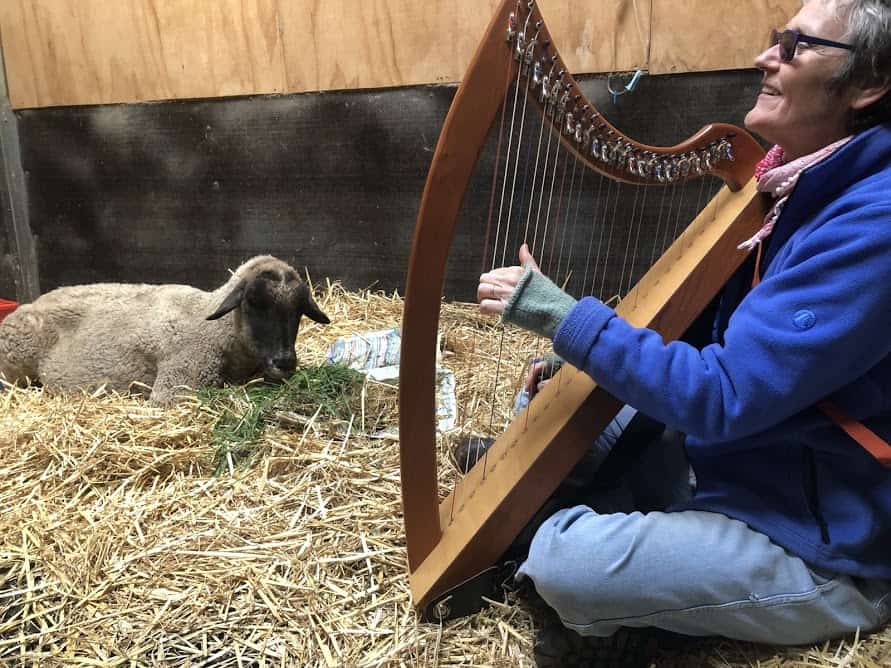
Photo: Edgar’s Mission Farm Sanctuary
Tactile Enrichment
To encourage sheep to interact with their environment and redirect otherwise problematic behavior, consider implementing tactile enrichment strategies in their living spaces:
- Add various types of sheep-safe brush and vegetation.
- Add stumps, elevated areas of dirt or platforms for them to explore and interact with.
- Add sand, dirt, or other substrates that provide a different feeling when walked on or laid upon.
- Add stuffed animals, balls, fallen trees, paper maché, or anything else that provides various textures to explore. As always, ensure that sheep cannot accidentally ingest any objects or parts of them!
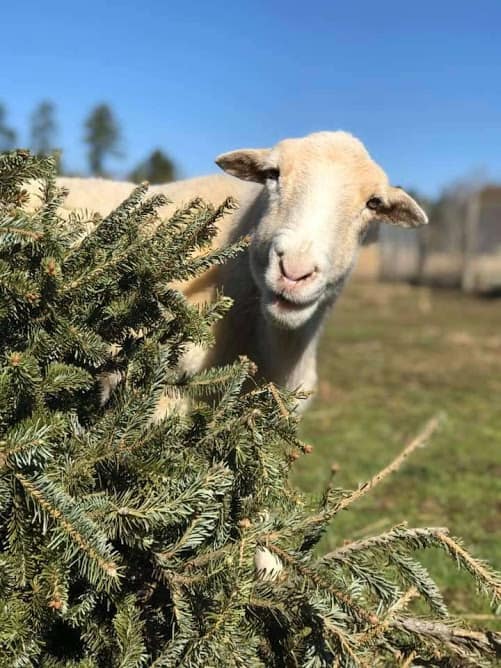
Photo: Piedmont Farm Animal Refuge
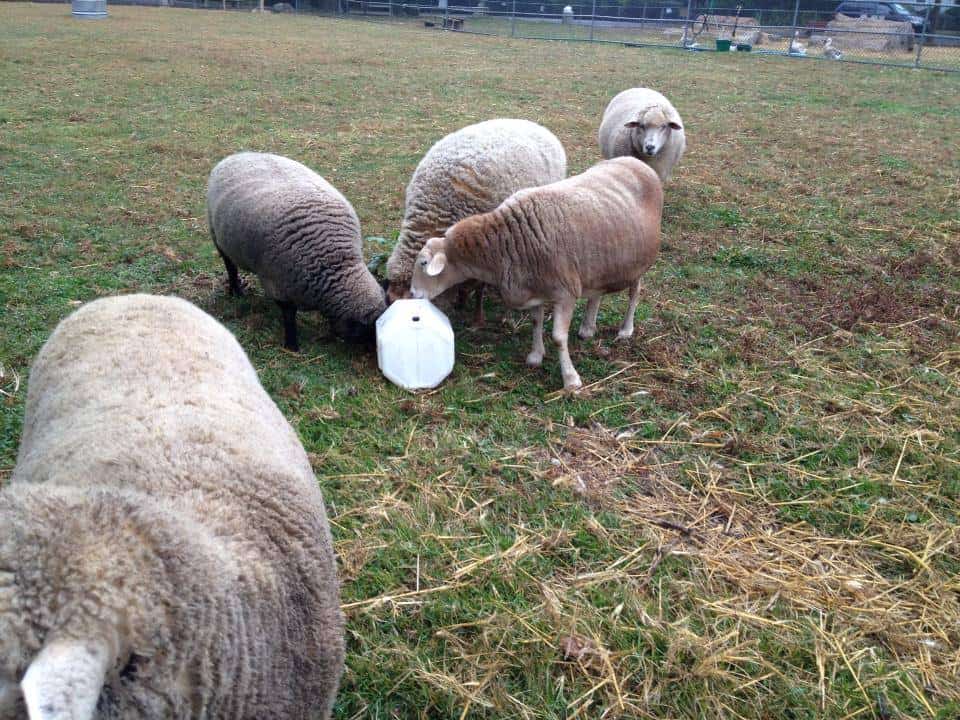
Photo: Lewis Oliver Farm Sanctuary
Cognitive Enrichment
Cognitive enrichment involves experiences or environments that encourage curiosity, problem-solving behaviors, and learning. A number of enrichment strategies listed above also fall into this category. Puzzle feeders and engaging with curious things in their environment are examples. But let’s touch on another form of cognitive enrichment: positive reinforcement learning (This is often referred to as “training”, but we like to refer to it as clicker “learning”, “play” or “bonding”).
- Positive Reinforcement Engagement
- Many sheep may enjoy interacting with their human caregivers. One way to build a strong human-sheep bond and boost cognitive functioning in your sheep residents is to engage in clicker “learning”. Clicker learning and positive reinforcement are not interchangeable words. However, a clicker can be a useful tool during positive reinforcement engagement!
- Examples of activities to learn with your sheep residents could include learning to choose a specific shape or color of an object, rewarding them with an immediate click and treat. Other examples include learning to push a large ball or plastic barrel around or to even play “soccer” with you (exercise and engagement), ring a bell, open boxes, or even to ease fear or reactivity to medical procedures and transport. This external link provides a brief tutorial on how to engage horses with a clicker. This works for sheep too.
Focus On The Resident
It is important to note that clicker learning or play should only be implemented for the positive experiences that can be provided to your residents. This should not be used to encourage behavior that might be unsafe or exploitative.
Observe And Take Notes
Because every sheep is an individual, they are likely to have individual responses to enrichment strategies. When you first add enrichment items, be sure to carefully observe the reactions of your residents. This is to ensure they are comfortable and not frightened, and also to ensure they aren’t eating any parts they shouldn’t be.
To prevent discomfort to new items or enrichment schedules, consider adding novel objects to an area to the side of their living space or in a space that doesn’t require them walking past the item to go inside, outside, or reach their water or food. If you believe one of your resident flocks or individuals may be fearful of certain enrichment, encouraging them to investigate object while you are sitting and holding the object can help ease fears. Using food or treats to motivate them to interact with the item can be a great way to start. Giving your residents the option to engage or not with enrichment items can be empowering and improve emotional states. Be sure to make notes of any reactions and when their level of interest seems to subside. This will help you know how to best schedule days to change up their enrichment and provide them with a mentally stimulating environment.
Novelty
Novelty can be an enrichment proffering on it’s own! Making changes to the “furniture,” arrangement, placement of food, addition of balls, toys, and smells, can all create an interesting and enriching environment for your sheep residents. Sheep are clever and may become bored after some time with provided enrichment. For this reason, it is important to incorporate “switch it up” days into your residents’ enrichment schedules. However, sheep residents may be more likely to exhibit fear of novel enrichment than species like goats, and great care should be taken to ensure they feel safe and comfortable, otherwise the strategy isn’t enriching! As mentioned above, it is important to take notes on flock and individual responses so you can properly tailor enrichment to the interests and needs of your residents.
Building A Schedule
Once you learn more about your residents’ interests, you can build an enrichment schedule to provide varying forms of enrichment as part of your caregiving routine. This will keep things interesting for the sheep and help provide a stimulating and happy life for your residents.
Do you have an exciting enrichment strategy you use with your sheep? Tell us all about it!
SOURCES:
The Right Pipe | Sandy McFadden
Environmental Enrichment: High On The Record | The Enrichment Record (Non-Compassionate Source)
Approved Enrichment Devices | University Of Michigan (Non-Compassionate Source)
If a source includes the (Non-Compassionate Source) tag, it means that we do not endorse that particular source’s views about animals, even if some of their insights are valuable from a care perspective. See a more detailed explanation here.








